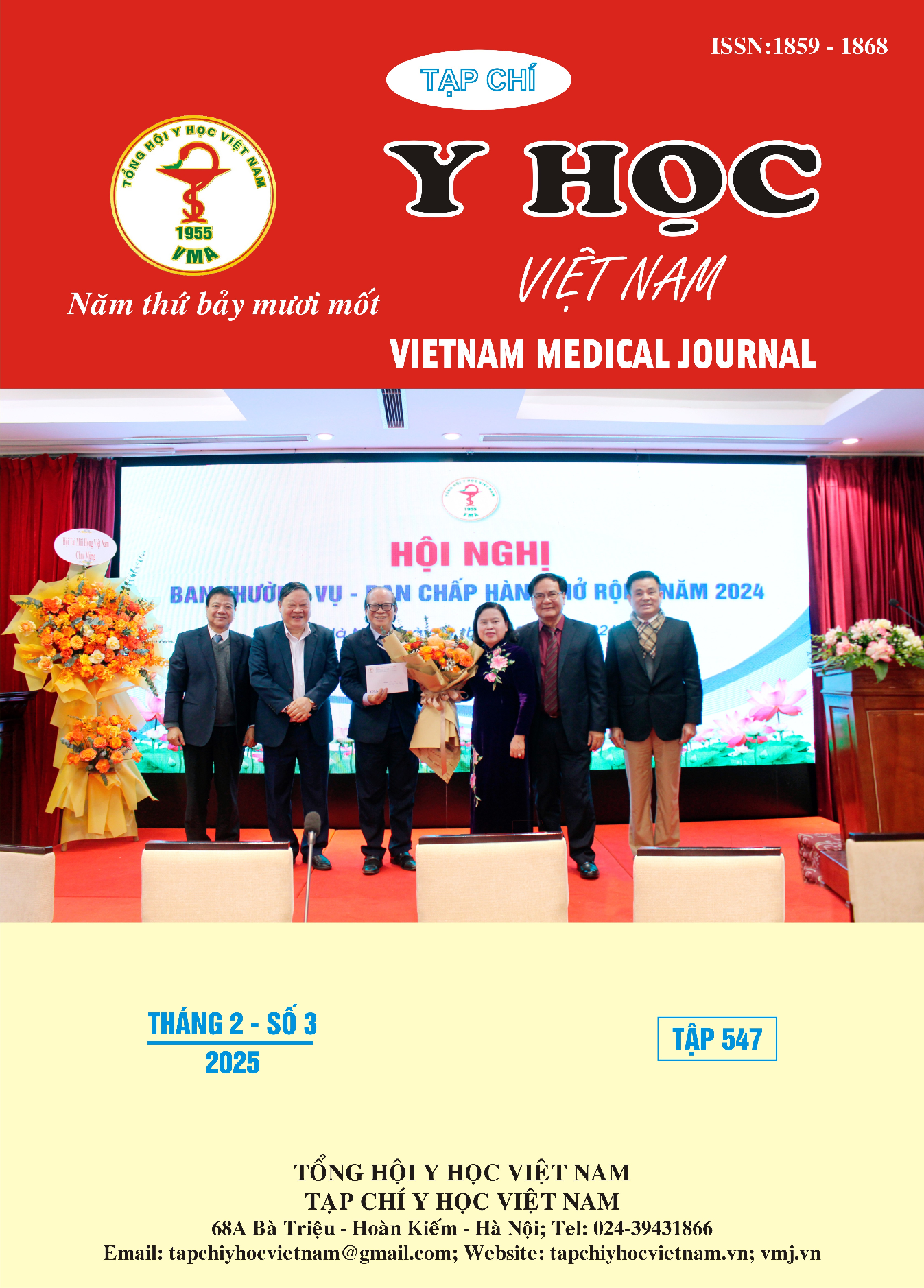CLINICAL FEATURES AND CAUSATIVE AGENTS OF PNEUMONIA IN HIV/AIDS PATIENTS AT THE TROPICAL DISEASES HOSPITAL IN 2020
Main Article Content
Abstract
Background: Pneumonia is one of the significant causes of hospitalization and mortality among HIV-infected patients. A better understanding of the clinical features of this disease may help improve treatment for this population. Aims: To describe the clinical history, clinical and laboratory features, treatment, and determine the prevalence of causative agents isolated from respiratory specimens in HIV/AIDS patients with pneumonia who were hospitalized at the Tropical Diseases Hospital. Objectives and Methods: A cross-sectional descriptive study was conducted, sampling HIV patients aged 18 years and older with pneumonia who were admitted to the Tropical Diseases Hospital from January 2020 to June 2020, presenting with respiratory symptoms and/or signs of lung damage on chest X-ray. Results: Among the 96 cases of pneumonia in HIV patients recorded, 60.4% were newly diagnosed with HIV, of which 97.9% were in the AIDS stage. Pneumonia in HIV patients sometimes presents only with fever and lung abnormalities on chest X-ray. The pathogens found in respiratory specimens included: P. jirovecii (50%), bacteria (47.9%), tuberculosis (36.5%), and fungi (18.8%). Factors influencing the severity of pneumonia included P. jirovecii (OR 5.3; 95% CI: 2.2 – 12.8), tuberculosis (OR 0.2; 95% CI: 0.09 – 0.6), bacteria (OR 3.7; 95% CI: 1.6 – 8.6), and fungi (OR 24.4; 95% CI: 3.1 – 193) with p < 0.05. Regarding initial antibiotic treatment, 62.5% of patients received Cotrimoxazole combined with other antibiotics, 23.9% received Cotrimoxazole alone, and 6.3% received antibiotics alone. Conclusion: Pneumonia in HIV/AIDS patients is associated with various pathogens, which affect the severity of the disease. Patients often exhibit typical symptoms of pneumonia, such as fever and cough, and more than 50% experience respiratory failure. The majority are treated with a combination of Cotrimoxazole and antibiotics from the outset and respond well to treatment.
Article Details
Keywords
Pneumonia, HIV/AIDS, clinical features, pathogens
References
2. Huang L., Crothers K. (2009), "HIV-associated opportunistic pneumonias". Respirology, 14 (4), pp. 474-85.
3. Buchacz K., Baker R. K., Palella F. J., Jr., et al. (2010), "AIDS-defining opportunistic illnesses in US patients, 1994-2007: a cohort study". AIDS, 24 (10), pp. 1549-59.
4. Lê Mạnh Hùng (2008), Viêm phổi nhiễm trùng trên người nhiễm HIV/AIDS nhập viện tại thành phố Hồ Chí Minh,
5. Mandell L. A., Wunderink R. G., Anzueto A., et al. (2007), "Infectious Diseases Society of America/American Thoracic Society consensus guidelines on the management of community-acquired pneumonia in adults". Clin Infect Dis, 44 Suppl 2, pp. S27-72.
6. Gangcuangco LMA, Sawada I T. N., Do CD, et al. (2017), "Regional Differences in the Prevalence of Major Opportunistic Infections among Antiretroviral - Naïve Human Immunodeficiency Virus Patients in Japan, Northern Thailand, Northern Vietnam, and the Philippines.". The American Society of Tropical Medicine and Hygiene, 97 (1), pp. 49-56.


